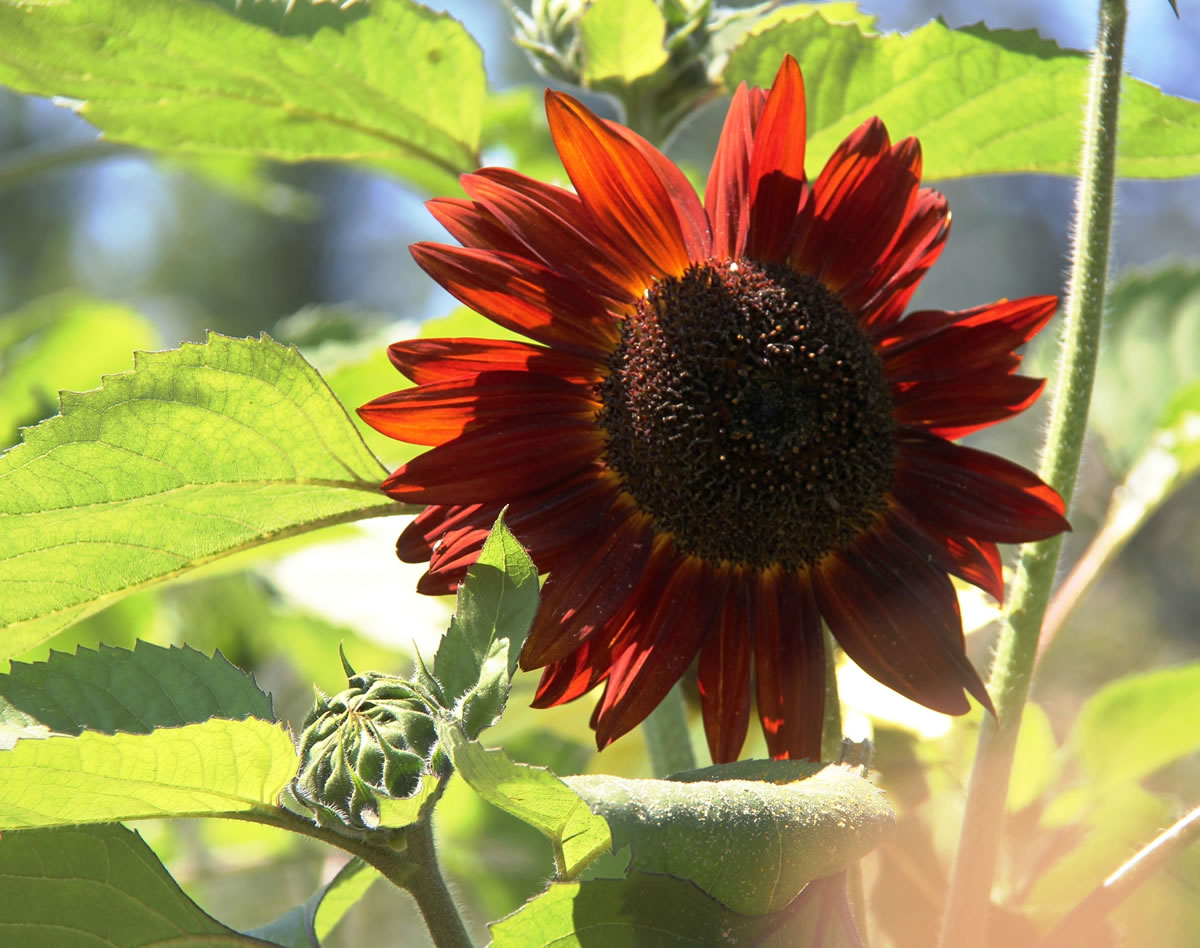We have enjoyed a spate of clear and rainless days this summer. Still, late summer is one of the shortest seasons in the garden. It’s filled with transition and change as the many-colored daylilies decline and the Black-eyed Susan (Rudbeckia hirta) come into full glory. As for the latter, Rudbeckia Goldsturm makes an upright clump with a profuse display of brown-eyed, yellow-orange daisies from midsummer through the fall.
The lovely flowering dolgo crabapple is a prolific fruiting tree that signals the end of summer with a heavy crop of petite, tartly sweet and sour crabapples. The bright red fruits hang in clusters of three or four, as red as cherries. I marvel every year at the fact that this tree, now 25 feet tall and wide, once fit in the trunk of my car along with two bags of composted manure.
Another plant that signals late summer and the inevitable arrival of autumn is the White Snowberry bush. This Northwest native is an upright shrub that is best used as a wild thicket or for erosion control on a sloping hillside. The pink flowers are followed by fat, white,
marble-like fruit from late summer to winter. Although it’s not as glorious as many new hybrids, it’s worth planting a thicket of this one under a Douglas fir where nothing else will grow.
Shop for bargains
Fall is a great time of year to shop for bargains on garden plants. If you’ve coveted a specific perennial but hesitated to buy it because of the cost, there’s a good chance the price will be marked down drastically in the coming months. This is especially true if the plant you are looking for is out of season and past its prime. The trick is to shop late enough for good sale prices and early enough for a decent selection.
This is the time to buy hardy perennials, shrubs, trees, groundcovers and vines. As long as you are buying from a reputable nursery, it should be a safe bet that fall sale plants will come back next year as healthy as any full-priced plant. You get a bargain because the plants are out of season. Perennials may have gone dormant. Most are at the end of their flower season. A sick or dying plant is never a bargain.
I encourage you to go shopping with a plant list and a budget to work from. If you know what plants you intend to buy, write down their Latin or trade names as well as the plant varieties. This is the only way to guarantee you are buying the exact plant you want. Include the general measurements of the area you are planting so that you can fill the garden without overplanting. Consider hiring a garden consultant to help you through this process or ask your nursery if they have a service that can assist you.
Not everyone is ready or even interested in buying plants that are dormant and won’t have an immediate impact on the garden. Fortunately, as the gardening population grows in our community, more nurseries are carrying a larger selection of healthy, late-season blooming plants. Look for asters, Japanese anemones, and Toad Lilies. Sedum Autumn Charm flaunts creamy buds that open rose-pink and variegated foliage for three seasons of interest.
Many trees and shrubs come into their own at this time of year with impressive displays of vivid reds, oranges and yellows. The Stag’s Horn sumac is dramatic, with flaming foliage and torch-like fruit clusters. The color intensity of deciduous trees and shrubs such as Japanese maple, vine maple, goldflame spirea and golden barberry varies from plant to plant, so choose individual woody plants for fall color now.
Leap of faith
Fall planting is a leap of faith for any gardener. Take a chance and you will surely reap the benefits of your conviction. Purchase the crocus-like, autumn-blooming colchicums at a local nursery and plant them liberally where they will add a complimentary color to next year’s autumn garden. A splash of purple-pink blossoms blends well with the tawny hues of late-season chrysanthemums.
If you’ve been eyeing spring bulb catalogs, send in your order before it’s too late. You want to order early enough to guarantee the selection of bulbs you want for the spring garden. Reputable bulb growers, such as Brent and Becky’s bulbs will send your plants at the correct time for your specific planting zone. If you intend to plant tulips, try the pastel Tulipa Apricot Beauty or the classic green and pink Greenland.
Robb Rosser is a WSU-certified master gardener. Reach him at Write2Robb@aol.com.



